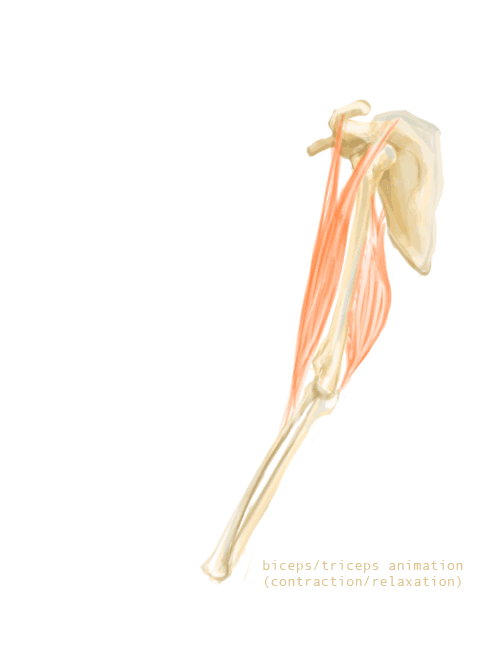Note that your final mark will not be saved in the system.
Muscular system GapFill
You must fill all the gaps before clicking ‘Check Answers!’

Skeletal muscles do not work individually to cause movement during sport and physical activity; they work in pairs. To put this simply, as one muscle contracts, the other .
The is the term given to the primary instigator of a joint movement. The contraction of an agonist helps to cause the movement of a joint’s related limb. The is the term given to the muscle which opposes the motion of the agonist, acting as its pair. The contraction of this type of muscle restores the limb to its starting position.
Let's explore these muscle pairs further with some sporting examples. Firstly, the hamstrings and is an example of an antagonistic muscle pair. During at the knee, the hamstring is the agonist muscle while the is the muscle. However, they reverse roles when the leg extends (e.g. to kick a ball). The biceps and is another example of an antagonistic muscle pair. During flexion at the elbow, the biceps is the while the triceps is the antagonist. However, they reverse roles when the arm extends (e.g. to throw a ball).
Moreover, when muscles undergo contraction, they can produce force in a number of ways, as they possess the capability to generate tension under different lengths. These include (concentric, eccentric) and contraction.
Isotonic muscle contraction describes a change in muscular length as the muscle undergoes contraction; contraction involves the muscle lengthening (e.g. when a dumb-bell is lowered), whereas concentric contraction involves the muscle becoming as it undergoes contraction (e.g. when a dumb-bell is lifted during a biceps curl). Finally, contraction involves no change in the muscle’s length as it undergoes contraction. These types of contraction occur when stability of the body needs to be maintained, such as when the body is exerting a force against an immovable object, e.g. a handstand against the floor.